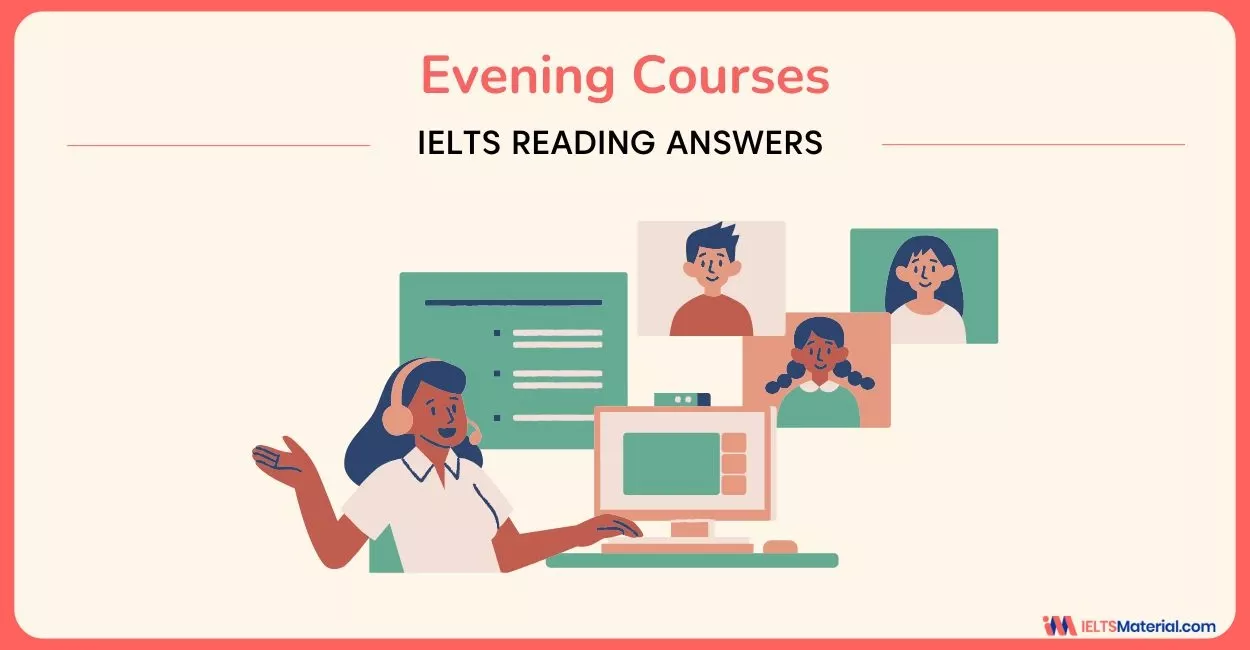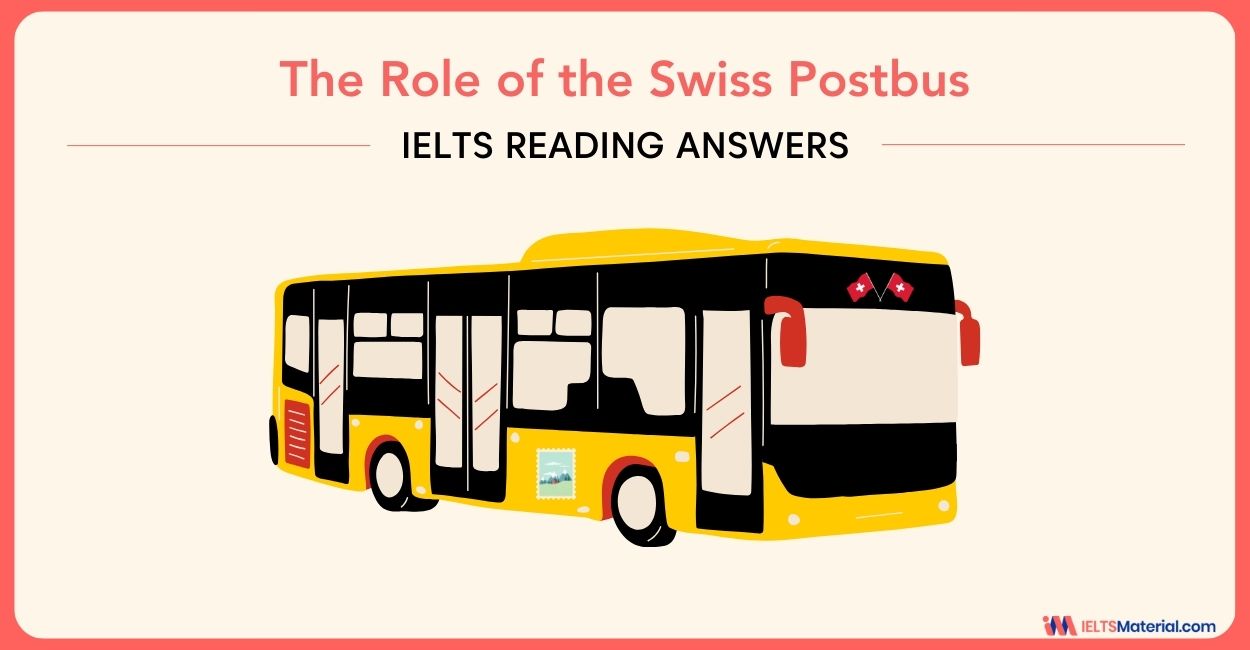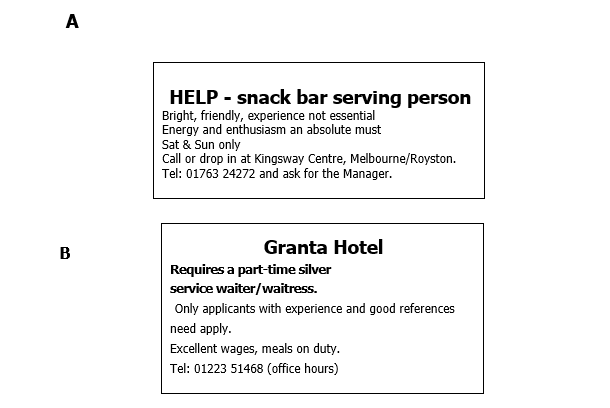Intercity Sleeper between London and Scotland and Work & Travel USA | IELTS General Reading Practice Test 20 with Answers
13 min read
Updated On
-
Copy link
Prepare yourself with the Intercity Sleeper between London and Scotland and Work & Travel USA | IELTS General Reading Practice Test 20 with Answers. Get a band score in real time and ace the IELTS exam!
Table of Contents

Limited-Time Offer : Access a FREE 10-Day IELTS Study Plan!
In the IELTS exam, one of the most difficult sections would be IELTS Reading. With diligent practice and preparation, you will be able to ace the IELTS General Reading section. The test consists of 40 questions and 3 Sections where you will get only 60 minutes to attempt. In the Reading practice test on Intercity Sleeper between London and Scotland and Work & Travel USA, you will be able to get familiarised with the reading pattern.
Ideally, you should be taking 20 minutes to attempt one section. To practice more, you can do so with the IELTS General Reading Practice Tests where you will be able to strategise for different types of questions.
Section 1
Read the text below and answer questions 1-6
Questions 1-6
Look at the seven job advertisements, A-G, and read the descriptions of people below.
Which is the most suitable job for each person?
1 a person with two small children who wants a few hours a week of unskilled work in the early mornings
2 a person with no experience or qualifications who is looking for a short term full-time job, Monday to Friday
3 a lively student with no experience, who cannot work on weekdays
4 a person with more than 20 years’ experience in catering who would like to run a business
5 a catering college graduate who is now looking for his first full-time job
6 a person with many years’ experience working in hotels who are now looking for well- paid part-time employment in a hotel
Read the text below and answer questions 7-14
Intercity Sleeper between London and Scotland
Most tickets may be used for travel by Sleeper, subject to availability, and a reservation in a two-berth cabin can be made for £25, except in the case of Solo and Special tickets, which include Sleeper reservations in the fare. The price includes early morning tea or coffee and biscuits. A continental or hot breakfast can be ordered if you wish.
- SuperApex
Only available for travel after 9 am. Book at least 2 weeks ahead and travel between Edinburgh or Glasgow and London for the unbeatable price of £59 return. This ticket is non-refundable unless the service is cancelled.
B. Apex
A real bargain fare. Only £69 return between Edinburgh or Glasgow and London. Great value Sleeper travel available by booking at least a week before outward travel. Ticket refundable on payment of a 25% administrative charge.
C. SuperSaver
Available right up to the day of travel and valid any day except these peak days: all Fridays, also 18-30 December, 31 March and 28 May. Departures between midnight and 2 am count as previous day’s departures. London to Glasgow or Edinburgh £82.
D. Saver
This flexible ticket is valid every day and can be bought on the day of travel. Your ticket allows standard class travel on any train between 10 am and midnight. No seat reservations available. London to Glasgow or Edinburgh £95.
E. Solo
Treat yourself and enjoy exclusive use of a Standard cabin. Solo is an inclusive return travel ticket with Sleeper reservations for one or both directions. Outward and return reservations should be made at the time of booking. The journey must include a Saturday night away. £140-£160 London to Edinburgh/Glasgow return.
F. Special
Special is an inclusive return travel package for two people including sleeper reservations for one or both directions. It can mean savings for both of you. Outward and return reservations should be made at the time of booking. From £120.
G. Standard
Not the cheapest option but available up to the time of travel and valid for all trains and at all times. You are advised to turn up early for travel on a Friday.
Questions 7-14
Look at the seven types of the train ticket, A-G.
For which type of train ticket are the following statements true? Write the correct letter, A-G, in boxes 7-14 on your answer sheet.
Note: You may use any letter more than once.
7 There are advantages if you book a journey with a friend.
8 You cannot use this on a Friday.
9 This can be used without restriction.
10 This can only be booked up to 7 days before departure.
11 It’s the cheapest ticket available but there is a restriction on departure time.
12 If you decide not to travel after you have bought a ticket, you cannot get your money back.
13 This is not available if you’re travelling out on a Monday and back the next day.
14 You cannot use this ticket for departures between midnight and 10 am.
Also check :
- Tips to Improve IELTS Reading Skills
- IELTS Reading Practice Test
- True False Not Given IELTS Reading
- IELTS Reading recent actual test
- IELTS Academic Reading test papers with answers pdf
- IELTS General reading practice test
Section 2
Read the text and answer questions 15-20
Work & Travel USA
Do you want to have the best summer holiday ever?
Have you just graduated and want to escape for a unique experience abroad?
Only $1950 will make It all happen!
This unbeatable program fee includes:
- return flight from Sydney to Los Angeles (onward travel in the USA not included)
- 3 months’ ; insurance cover
- 2 nights accommodation on arrival plus meet and greet and airport transfer
- arrival orientation by experienced InterExchange staff
- visa application fees
You also have:
- access to a J-l visa enabling you to work in the USA
- an extensive directory of employers
- InterExchange support throughout the program
- 24-hour emergency support throughout the length of the program
Call toll-free 1800 678 738
InterExchange has 50 years of experience in international student exchange programs. 18,000 students from around the world travel yearly to the USA on this very program. InterExchange can also offer you work opportunities in other countries.
WHAT IS INTEREXCHANGE?
InterExchange, one of the world’s leading operators of international exchange programs and related services:
- is a non-profit, non-governmental organisation
- has 700 professional staff in 30 countries worldwide
- was founded in 1947
InterExchange operates these programs for students all around the world. It offers you trained and travelled staff, plus full support during the application process. You can choose any job that interests you anywhere in the USA, whether that is working in a law firm in Boston, a famous ski resort in Colorado or serving coffee and doughnuts in the buzzing streets of New York. You can select the period you work and the period you travel; you may want to work for 1 month and travel for 3 or work the entire duration of your stay. The choice is yours.
YOU CAN TAKE UP THIS OPPORTUNITY IF YOU ARE:
- a full-time student at an Australian university or TAFE college
- presently enrolled, or finishing this year, or you have deferred a year of study
- over 18 years old by November in the academic year in which you apply to InterExchange
- enthusiastic about the experience of a lifetime
Questions 15-20
Read the advertisement and write
True – if the statement agrees with the information
False – if the statement contradicts with the information
Not Given – if there is no information on this
15 The program cost includes internal flights within the USA.
16 Emergency assistance offered in the program includes legal advice.
17 InterExchange offers similar programs in countries other than the USA.
18 InterExchange is part of a government program.
19 There are no restrictions on the type of job you can do.
20 There is an upper age limit for applicants.

Questions 21-27
Each of the short paragraphs below (21-27) gives information about Arthur Phillip College.
Read each paragraph and choose which of the linked sections of the website, A-L, would contain this information.
Write the correct letter A-L in boxes 21-17 on your answer sheet.
21 All students receive a transcript of results and relevant award documentation when they end their studies with the College.
22 On enrolment, all students receive automatic membership to the Social Club and Public Speaking Club. Students may choose to participate in any arranged activities. The College encourages and promotes interaction between students and teaching and non-teaching staff.
23 Successful completion and the achievement of an A or B result in some courses will enable students to achieve advanced standing in these subjects if they proceed to university study. For a list of the courses acceptable to a particular university, e-mail us your request with the name of the university and the course you are interested in.
24 Arthur Phillip College is one of the top business colleges in Sydney, Australia. The College offers a wide range of educational and training programs in business and related areas. Its accredited vocational training courses are designed to meet the needs of individual students and industry.
25 At Arthur Phillip College you will learn from lectures, seminars, case studies, group projects, individual assignments and class workshops. Lectures and seminars present concepts and ideas and provide for question-and-answer sessions. Students are expected to take an active role in the learning process through class participation, presentations and projects.
26 Courses at Arthur Phillip College involve an average of 25 hours per week of tuition time, with supervised group study accounting for a further 5 hours per week. At least 10 hours per week of an individual study are also recommended for most courses.
27 During this program, you will meet the Director of Studies, teachers and key administrative staff such as the Accommodation Officer and Student Counsellor so that, right from your first day, you will know how each of them can help you during your time at the College.
Section 3
- On the afternoon of 30th August 1989, a fire broke out at Uppark, a large eighteenth-century house in Sussex. For a year builders had been replacing the lead on the roof, and by a stroke of irony, were due to finish the next day, on August 31st. Within fifteen minutes of the alarm being sounded, the fire brigade had arrived on the scene, though nothing was to survive of the priceless collection on the first floor apart from an oil painting of a dog which the firemen swept up as they finally retreated from the blaze. But due to the courage and swift action of the previous owners, the Meade-Featherstonhaugh family, and the staff, stewards and visitors to the house, who formed human chains to pass the precious pieces of porcelain, furniture and paintings out onto the lawn, 95 per cent of the contents from the ground floor and the basement were saved. As the fire continued to rage, the National Trust’s conservators were being mobilised, and that evening local stationers were specially opened to provide the bulk supplies of blotting paper so desperately needed in the salvage operation.
- The following morning, Uppark stood open to the sky. A sludge of wet charcoal covered the ground floor and basement, and in every room, charred and fallen timbers lay amongst the smoke. It was a scene of utter devastation.
- After the initial sense of shock, the days which followed the fire were filled with discoveries. Helped by volunteers, the National Trust’s archaeologists and conservators swung into action, first of all marking the site out into a grid and then salvaging everything down to the last door handle. The position of each fragment was recorded, and all the debris was stored in countless dustbins before being shifted and categorised.
- There was great excitement as remnants of the lantern from the Staircase Hall were pulled out from the debris of two fallen floors, and also three weeks later when the Red Room carpet, thought to have been totally lost, was found wrapped around the remains of a piano. There was a lucky reprieve for the State Bed too. Staff who had left the scene at 3 am on the night of the fire had thought its loss was inevitable, but when they returned the next morning it had escaped largely undamaged. Firemen, directed by the National Trust’s conservators from outside the Tapestry Room window, dismantled the silk-hung bed and passed it out piece by piece. Twenty minutes later the ceiling fell in.
- The scale of the task to repair Uppark was unprecedented in the National Trust. The immediate question was whether it should be done at all. A decision had to be whatever had not been damaged by the fire was exposed to the elements. Within a month, after consulting many experts and with the agreement of the National Trust’s Executive Committee, the restoration programme began. It was undertaken for three main reasons. After the fire it had become apparent just how much remained of the structure with its splendidly decorated interiors; to have pulled the house down, as one commentator suggested, would have been vandalism. Also, the property was covered by insurance, so the repairs would not call upon the National Trust’s own funds. Lastly, much had been saved of the fine collection acquired especially for Uppark from 1747 by Sir Matthew Featherstonhaugh and his son Harry. These objects belonged nowhere else, and complete restoration of the house would allow them to be seen and enjoyed again in their original setting.
- The search for craftsmen and women capable of doing the intricate restoration work was nation-wide. Once the quality and skill of the individual or company had been ascertained, they had to pass an economic test, as every job was competitively tendered. This has had enormous benefits because not only have a number of highly skilled people come to the fore – woodcarvers, for example, following in the footsteps of Grinling Gibbons – but many of them, for example, plasterers, have relearnt the skills of the seventeenth and eighteenth centuries which can now be of use to other country house owners when the need arises.
- In June 1994 the building programme was completed, on time and on budget. The total cost of the work to repair the house and its contents came to be nearly £20 million, largely met from insurance. In addition, it made economic sense for the National Trust to invest time and money in upgrading water and heating systems, installing modern environmental controls, and updating fire and security equipment.
- The final stages of restoration and the massive programme of reinstallation took eight months. The family and the room stewards were visibly moved when returning to their old haunts, perhaps the best testament that the spirit of Uppark had not died. But the debate will no doubt continue as to whether or not it was right to repair the house after the fire. The National Trust has done its best to remain true to Uppark; it is for others to judge the success of the project.
Note: The National Trust is a charitable organisation in Britain set up over a hundred years ago to preserve the national heritage.
Questions 28-33
The text below has eight paragraphs A-H.
Which paragraphs contain the following information?
Write the appropriate letters, A-H, in boxes 28-33 on your answer sheet.
28 the procedure for sorting through the remains of the fire
29 how Uppark looked after the fire
30 improvements made to the rebuilt Uppark
31 the selection of people to carry out the repair work
32 why the National Trust chose to rebuild Uppark
33 how people reacted to the rebuilt Uppark
Questions 34-37
Answer the questions below.
Choose NO MORE THAN THREE WORDS from the text for each answer.
Write your answers in boxes 34-37 on your answer sheet.
34 On what date in 1989 should the original repairs to the roof have been completed?
35 By what method were things rescued immediately from the burning house?
36 After the fire, what did the conservators require large quantities of immediately?
37 Into what conservation put material recovered from the fire?
Questions 38-40
Choose the correct letter, A, B, C or D
Write the correct letter in boxes 38-40 on your answer sheet.
38 The fire destroyed
- all the contents of the ground floor.
- most of the contents of the basement.
- the roof of the house.
- all the contents of the first floor.
39 One of the reasons the National Trust decided to rebuild Uppark was that
A The Meade-Featherstonhaugh family wanted them to.
B the building as it stood was unsound.
C they wouldn’t have to pay for the repairs.
D nothing on this scale had been tried before.
40 Some of the craftsmen and women employed in the restoration of Uppark have benefited because
A they were very well paid for doing intricate work.
B their businesses have become more competitive.
C they were able to work with Grinling Gibbons
D they acquired skills they did not have previously.
Answer Key
Unlock Answers
Section 1
| 1 | D |
| 2 | C |
| 3 | A |
| 4 | G |
| 5 | F |
| 6 | B |
| 7 | F |
| 8 | C |
| 9 | G |
| 10 | B |
| 11 | A |
| 12 | A |
| 13 | E |
| 14 | D |
Section 2
| 15 | False |
| 16 | Not Given |
| 17 | True |
| 18 | False |
| 19 | True |
| 20 | Not Given |
| 21 | J |
| 22 | K |
| 23 | E |
| 24 | A |
| 25 | G |
| 26 | I |
| 27 | C |
Section 3
| 28 | C |
| 29 | B |
| 30 | G |
| 31 | F |
| 32 | E |
| 33 | H |
| 34 | August 31st |
| 35 | Human chain/chains |
| 36 | Blotting paper |
| 37 | (countless) dustbins |
| 38 | C |
| 39 | C |
| 40 | D |
Continue with…Practice Test 19

Start Preparing for IELTS: Get Your 10-Day Study Plan Today!
General Reading Practice Tests


Nehasri Ravishenbagam

Kasturika Samanta

Nehasri Ravishenbagam
Recent Articles

Kasturika Samanta

Kasturika Samanta


Kasturika Samanta







Post your Comments